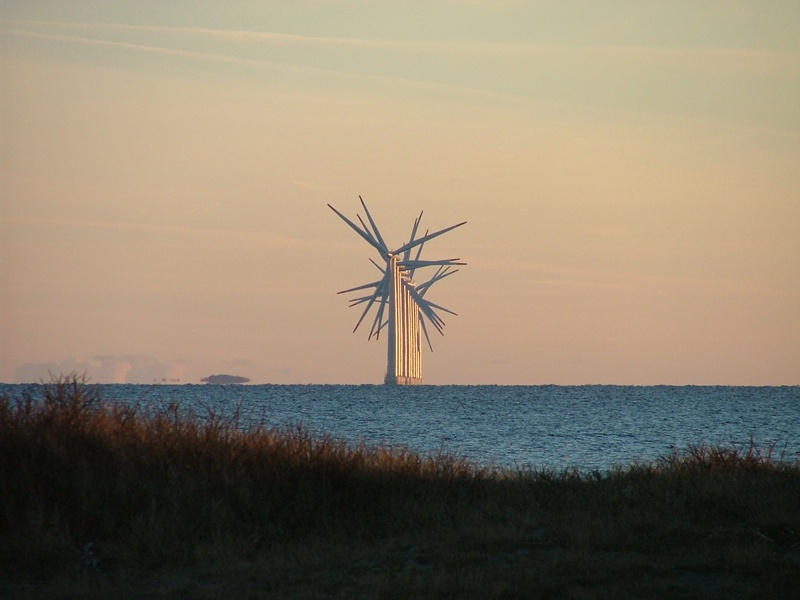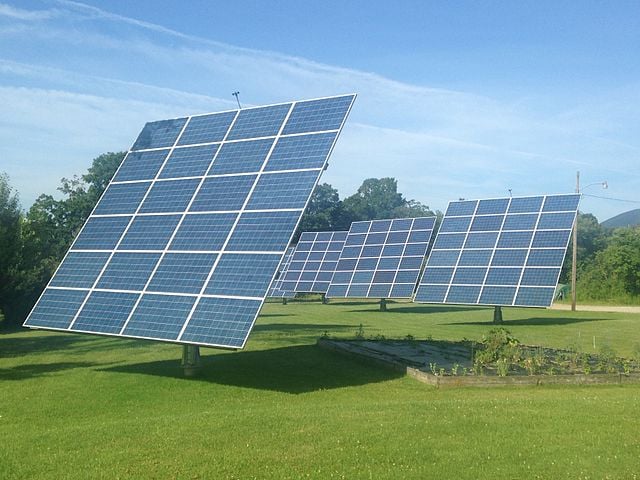I appreciate NASA’s Global Climate Change website as a resource for scientific evidence of the existence of human-made climate change (https://climate.nasa.gov/evidence/). The facts are simple, such as the rate of global sea level rise during the last two decades being nearly double that of the last century. Of course, the most telling fact is that the planet's average surface temperature has risen about 2.0 degrees Fahrenheit (1.1 degrees Celsius) since the beginning of global temperature record keeping (around 1890). Most of the warming occurred in the past 35 years, with 16 of the 17 warmest years on record occurring since 2001. Essentially every year is warmer than the year before and is the warmest year on record. That is, until the next year.
5 min read
Adapting to Climate Change: Why Do It, and How to Begin?
By Rachael Straub on Jun 7, 2017 10:00:00 AM
Topics: Sustainability Public Policy
4 min read
Community Engagement for Carbon Neutrality
By Gretchen Schimelpfenig on May 10, 2017 10:00:00 AM
On Samsø Island in Denmark, Søren Hermansen led a community of 3,724 to achieve their zero-carbon goals in ten years. Today, every person on the island has a negative carbon footprint. What can cities in Vermont learn from Danish methodologies of stakeholder engagement so they can reach their carbon reduction goals?
Topics: Sustainability Public Policy
3 min read
Implications of the Average Global Temperature Rising Two Degrees
By Rachael Straub on Mar 22, 2017 10:00:00 AM
When people hear that scientists predict only a 2-4 degree rise in global temperatures due to global warming, they often shrug. That doesn’t sound too bad. If a warm summer day is 85 degrees instead of 82, what’s the big deal? But a 2-4 degree rise in temperatures means much more than that, and it’s important to know what it means if we’re to understand why climate scientists call for an immediate reduction in carbon emissions world-wide.
Topics: Public Policy
6 min read
Renewable Energy Generation in the United States
By Gretchen Schimelpfenig on Mar 15, 2017 10:00:00 AM
Renewable energy resources – including solar, wind, geothermal, hydroelectric, biomass (any organic non-fossil material of biological origin), ocean thermal, wave action, and tidal action – are becoming a larger part of the American energy portfolio.
Topics: Sustainability Public Policy
3 min read
Winter Olympics 2050 — Dubai, UAE?
By Ben Fowler on Dec 8, 2016 10:00:00 AM
I originally posted this in 2014. But, with Killington recently hosting a World Cup race in November, and given how much they relied on artificial snow, it seemed appropriate to bubble it back up. Snowmaking can be an extremely energy-intensive activity. With fewer solidly snowy winters, can skiing be sustainable [PDF]?
-Ben
The 2014 Winter Olympics being held in Sochi, Russia are located at one of the warmest locations in the history of the games. Setting aside for now the slow creep of a warming climate, Sochi, located at the eastern shores of the Black Sea, is a humid subtropical climate with an average winter temperature of around 50F during the day and still above freezing at night. In the higher elevations in the nearby Caucasus Mountains, where the events are taking place, daytime temperatures still average above freezing during the day. So, while it is a far better location for the actual “winter” portion of the games than the palm-tree-lined streets of the city of Sochi proper, it still is not the ideal location to host the Winter Games.
Topics: Sustainability Public Policy
3 min read
HFC Refrigerants Are on the Way Out
By Ben Fowler on Nov 7, 2016 12:00:00 PM
An Amendment to the Montreal Protocol
Last month, representatives from over 170 nations gathered in Kigali, Rwanda to negotiate and ultimately agree to an amendment to the Montreal Protocol—the landmark international treaty, signed in the late 1980’s, which led to the phase-out of the manufacture and use of ozone-layer-depleting chlorofluorocarbon refrigerants (CFCs). The 2016 amendment focused on phasing out hydrofluorocarbon refrigerants (HFCs) which, while safer for the ozone-layer than CFCs, are themselves very powerful greenhouse gasses with far more global warming potential than CO2.
Topics: Sustainability Public Policy
4 min read
Saving New York City from Rising Sea Levels
By Eveline Killian on Oct 26, 2016 12:00:00 PM
I fell asleep to a TED Talk while visiting New York City the other night, but a startling statement brought me back to consciousness. New studies predict the oceans could rise by close to two meters (more than six feet) by the end of the century. That’s double original estimates and only 83 years from now - in our kids’ or at least our grandkids’ lifetimes!
Topics: Sustainability Public Policy
2 min read
Ireland’s Energy Sources: How Green is the Emerald Isle?
By Katie Mason on Sep 28, 2016 10:00:00 AM
Inspired by a recent vacation to Ireland, I was compelled to research Ireland’s energy sources and what forms of renewable energy they are utilizing. Ireland is not a large country (slightly smaller than Indiana, geographically) and is not densely populated with the exception of a few cities. My vacation toured the southwest/western coast as well as Dublin on the east coast. In this blog post, I will discuss what I learned about Ireland’s energy sources and how the country is utilizing renewable energy.
Topics: Sustainability Public Policy
3 min read
Energy Burden is Just One Indicator of Inequality
By Jennifer Chiodo on Aug 17, 2016 10:00:00 AM
Many of the readers of the Building Energy Resilience blog may not know that when I started working in the field of energy efficiency, my focus was on multi-family housing serving people with low incomes. ACEEE recently published this study on the income burden for low-income households. The energy burden is the percent of income paid for energy. It turns out that low-income households have two times the energy burden of the median household – paying over 7% of annual income in energy costs.
Topics: Green Building Public Policy
3 min read
Construction of the 2016 Rio Olympics
By Katie Mason on Aug 10, 2016 1:00:00 PM
While watching coverage of the 2016 Olympic Games in Rio de Janeiro, I started looking into what it took to create the venue which accommodates many of the events. Similar to every Olympic game, Rio had a short period of time to build the extravagant stadiums and the other venues required. In this post, I will discuss what it took to construct this venue and some challenges with this particular location.

.jpg)





.jpg)


